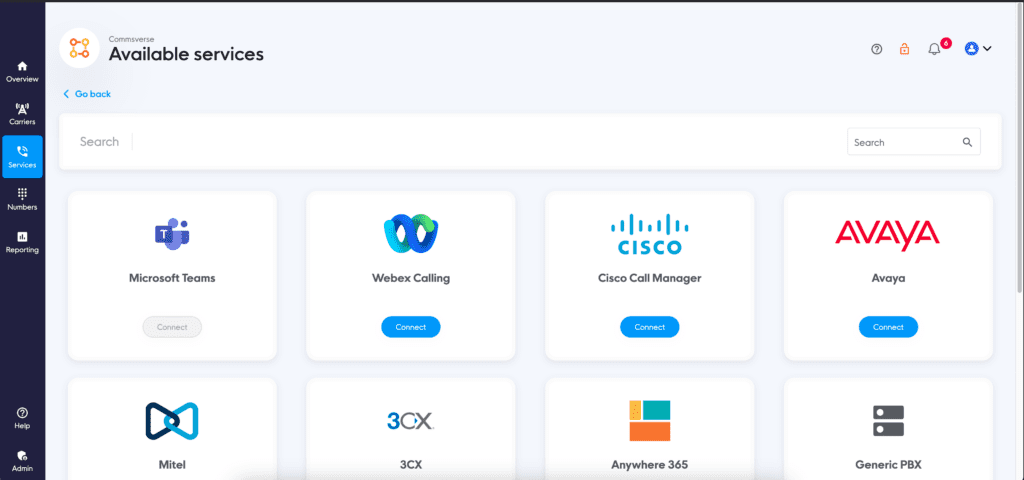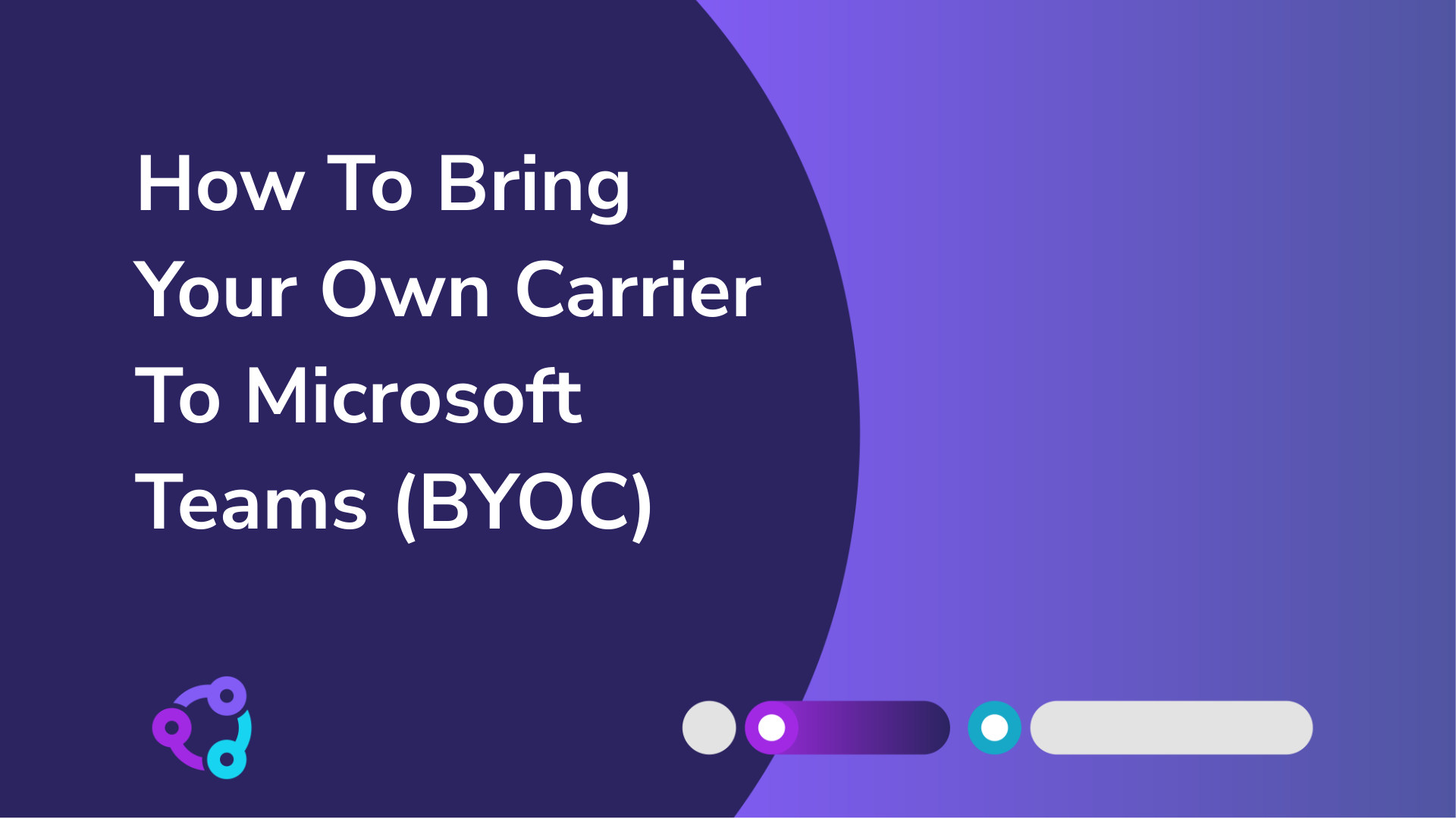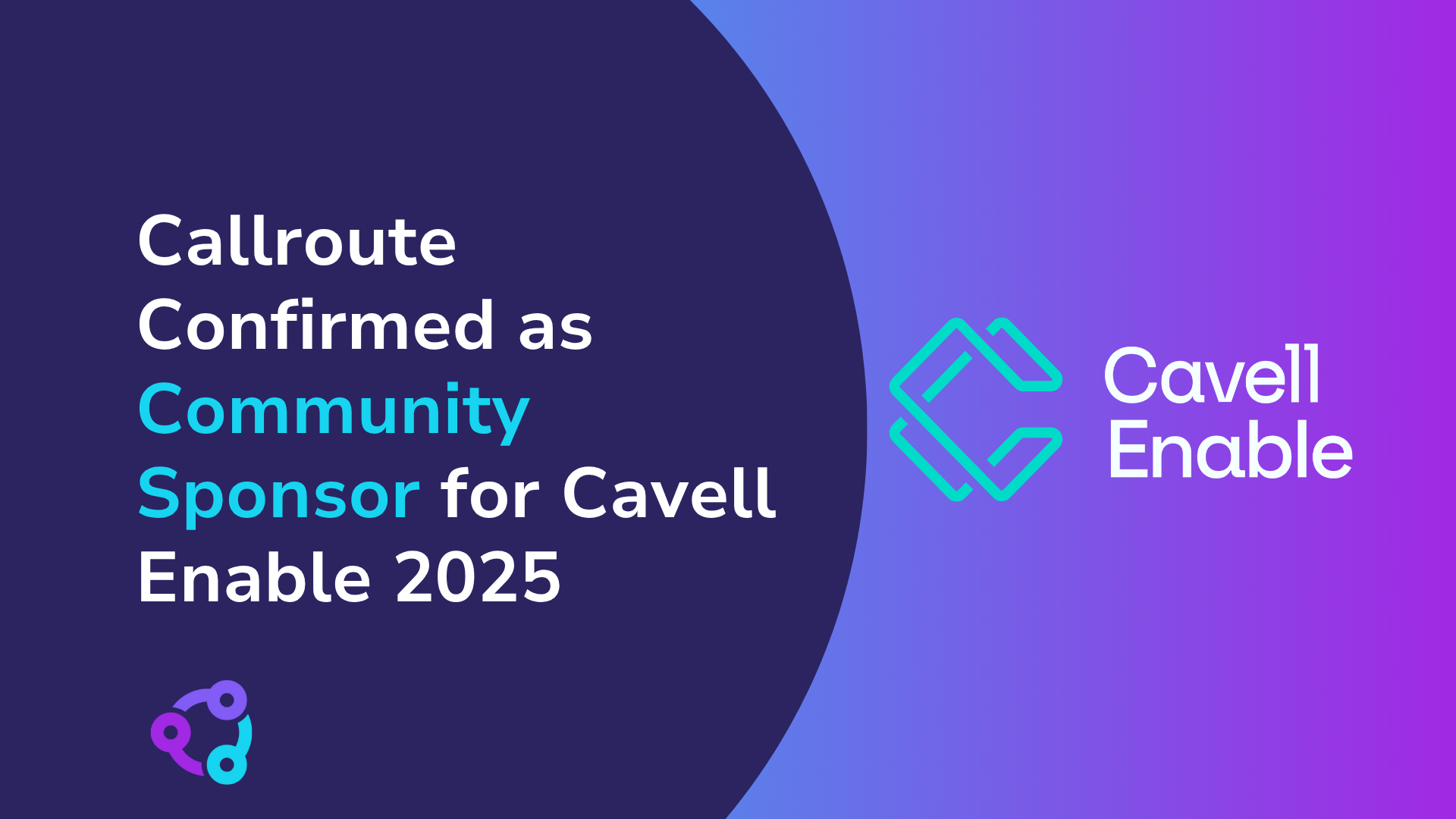If you’re concerned about call costs spiraling out of control, have several PBX vendors to consolidate, or are working through a project to move everything into Microsoft Teams, the Bring Your Own Carrier (BYOC) option might just be what you’re looking for.
If you have a PSTN calling provider outside Microsoft, it’s now more than possible to use them for your minutes while using Teams as the front-end interface to place the calls.
In this blog post, we walk through the why, how, and how to right now of BYOC in Microsoft Teams.
Why BYOC to Microsoft Teams?
You’ve probably got enough reasons yourself.
They might include:
- Pressure from procurement to reduce or consolidate telecom spend
- Pressure from IT to simplify management across multiple systems or regions
- Long-term legacy PBX contracts still in play
- Geographical areas not yet supported by Microsoft Calling Plans or Operator Connect
- A wider unified communications or digital transformation strategy that includes modernising voice services
But, if not, and the decision is down to you, consider bringing your own carrier to use as your calling provider inside Teams for these reasons:
- Cost efficiency: paying retail or creating workarounds is never cost-effective. With BYOC, you can leverage existing carrier contracts, tariffs, and SIP trunks directly within Teams.
- Coverage and flexibility: you can extend Teams telephony into regions where Microsoft doesn’t offer native calling, and scale capacity as your organisation grows.
- Control per site: total access and visibility of calls and costs. You maintain authority over routing, policies, and carrier relationships instead of relying on Microsoft or third-party intermediaries.
- Continuity and resilience: if Teams or a single carrier experiences downtime, you can reroute calls through alternative paths to maintain service.
- Regulatory compliance: configure emergency calling and local number rules to meet regional requirements.
- Advanced features: Some complex call flows and integrations still need external carrier flexibility.
- Resilience: BYOC enables alternate routing if Teams or a carrier connection goes down.
- Integration potential: Connect Teams with existing PBXs, SIP devices, or contact centre platforms.
It all begins to add up, doesn’t it? It’s easy to see why BYOC for Microsoft Teams is not just a blue-sky requirement, but almost a must-have for the modern communications stack.
Isn’t native Teams Calling easier?
Yes — if it fits your needs.
Native Microsoft Calling Plans work well when:
- You need to activate a small number of users quickly
- Your organisation has basic telephony requirements
- You don’t plan to scale significantly
- You only operate in countries supported by Microsoft’s Calling Plans
- It’s straightforward to port existing numbers to Microsoft
Microsoft is now a fully licensed telecoms provider in many regions, so the number porting process is similar to working with major carriers like BT or AT&T.
Calling Plan is a good option for organisations with simple calling setups and minimal change management, who plan to only make small changes via the Teams Admin Center and want to consolidate their (fairly small) calling infrastructure under one roof.
But, when you need advanced features, technical changes, and global scaling, Calling Plan becomes either expensive or restrictive.
Isn’t native Teams Calling cheaper?
You’d think so, wouldn’t you?
With everything Microsoft, it makes sense that you benefit from cost savings. But there’s a lot of instances where you’re going to be paying for Calling Plans that go unused.
While Microsoft’s licensing simplicity is appealing, Calling Plans are a fixed-cost model, meaning you pay the same per user whether they make one call or hundreds.
For example, Teams Phone with Domestic Calling currently costs around £13 / $15 per user per month.
If you license 2,000 users, that’s approximately £312,000 / $360,000 per year — regardless of actual usage.
Research by Nermertes indicates between 50% and 75% of available minutes get used by Calling Plan customers, leaving unused minutes and creating a chasm between cost and value.
When deploying Teams Phone at scale, 50% of 2,000 users, for example, is a large cost gap that looks extremely unappealing on financial reports. Especially, when there’s a more cost-effective alternative.
BYOC, by contrast, lets you use existing carrier agreements or pay-per-use plans, so you align spend with real calling activity rather than paying blanket rates for unused minutes.
Which carriers integrate with Microsoft Teams?
Microsoft Teams supports a wide range of carrier integrations — and that list continues to grow.
Thanks to Direct Routing and Operator Connect, it’s now possible for almost any telecom provider to connect Teams users to the public phone network (PSTN).
- Direct Routing allows you to integrate virtually any carrier using a certified Session Border Controller (SBC).
- Operator Connect offers a pre-approved catalogue of providers that integrate directly through Microsoft’s cloud.
As of 2025, there are more than 100 Operator Connect partners worldwide, covering most major markets and regional carriers. View the full list of Microsoft Operator Connect Partners here.
BYOC options for Microsoft Teams
You have four main options if you want to bring your own carrier to Microsoft Teams:
- Use a Microsoft App Store integration
- Direct Routing
- Operator Connect
- Third-party orchestration platforms such as Callroute
Microsoft App Store integration
If your organisation already uses a cloud PBX such as Zoom Phone, Webex Calling, or another VoIP platform, you may find a Teams integration available through the Microsoft App Store.
These integrations work using cloud-to-cloud APIs within Microsoft’s open ecosystem, allowing users to access softphone functionality, such as dial pad, history, voicemail, directly inside the Teams client.
This setup lets you make and receive calls within Teams, but it operates outside Microsoft’s native Teams Phone system — meaning you won’t get full PSTN integration or unified Teams Phone features.
To enable this, you’ll need a corresponding cloud PBX licence (for example, Zoom Phone or Webex Calling) that supports external calling and a configuration file to connect it to Teams.
This method allows you to keep your existing carrier or cloud calling service inside Teams, but it’s not native PSTN integration. Users often switch between apps or tabs to make calls, which can affect workflow efficiency.
For organisations that want true native dialling through Microsoft Teams Phone, the next options — Direct Routing and Operator Connect — deliver that experience.
Direct Routing
Direct Routing connects Microsoft Teams Phone to your existing carrier through a certified Session Border Controller (SBC).
This can be hosted on-premises or in the cloud, giving you flexibility over how and where calls are routed.
It’s the best fit for organisations that:
- Need control over routing and carrier choice
- Have complex or hybrid environments
- Require integration with legacy PBXs or SIP platforms
Direct Routing provides maximum flexibility, but also requires more configuration and ongoing management than other models.
Operator Connect
Operator Connect offers a more managed, cloud-based option for connecting Teams to the PSTN.
You simply choose a Microsoft-approved carrier and assign numbers within the Teams Admin Center — no SBC setup required.
It’s ideal for organisations that:
- Want a fast, low-maintenance deployment
- Operate in regions covered by Microsoft’s partner network
- Prefer to manage calling directly through Teams
As of 2025, there are over 100 Operator Connect partners globally.
Bring your own carrier to Microsoft Teams without the hassle
There are several ways to connect your existing carriers to Teams — whether through a hybrid gateway, a hosted service, or a managed orchestration platform. Each approach offers different levels of control, speed, and scalability depending on your environment.
If you don’t want the hassle of buying new hardware or calling services, you could connect your existing carrier and services to Teams with our Callroute cloud integration.
There are two deployment models you can choose from:
- Side-by-side
- Upstream cloud
Side-by-side
Our side-by-side deployment model gives you the lowest barrier to Teams Phone integration on the market.
All you need to do is make a small change to your existing voice gateway to connect to Callroute, and that’s it.

The side-by-side model allows you to quickly deploy your Teams Phone proof of concept without making huge changes to your existing calling solution. You don’t need to inform your carrier, modify your PBX, or commit to new product contracts.
Using Callroute side-by-side offers you the flexibility of beginning your Teams Phone journey from as little as one user on a 30-day contract and provides you with a Teams Phone certified calling solution with no hardware.
Upstream cloud
Our upstream cloud model is the perfect solution for you if you’ve decided to integrate Teams Phone in your business permanently.
In this deployment model, you connect your existing carrier(s) to the Callroute cloud directly then connect Teams and your other phone systems to Callroute.

Once your carriers are connected to Callroute, you can decide where calls should be routed to based on the called number. You can route individual numbers to specific phone systems giving you complete control over your calling services.
When connecting all your phone systems to Callroute, you benefit from cloud on-net calling between systems. This means that users using one phone system, e.g. Cisco CUCM, can call other users within your business who use Teams Phone without routing calls to your carrier.
Connecting all your carriers to Callroute also removes the need to port your numbers or arrange a service migration with your carriers when you want to move users to Teams. This gives you the flexibility to make routing decisions quickly and without red tape or additional cost.
The biggest benefit of using Callroute for your calling connectivity is that you can add and remove your phone systems at your own pace. When you add a new system, this system becomes instantly available within your Callroute cloud and connectivity to your carriers and other phone systems is instantaneous.

This flexibility to add and remove carriers and phone systems based on your needs is unrivalled within the telecoms industry.
Whichever deployment model you choose you can easily change at any point in time.
Instead of milling around making countless changes and forever calling your supplier, you could connect your voice services to Microsoft Teams within minutes with our one-click integration.

There are no infrastructure or deep technical skills required. Just access to our self-service platform.
Inside the portal, you can:
- Automatically assign Direct Routing phone numbers
- Automatically assign Microsoft Calling Plans phone numbers
- Automatically assign Operator Connect phone numbers
- Mix and match locations, users, and numbers
You also benefit from our auto-provisioning service, which helps you save time and money on new user assignments, moves, adds, and changes.
There’s no more lengthy setup and there’s no human to make human error. You just create a user persona template and leave the rest to our automation.

Sounds like something you want to explore?
👉 Find out more about Callroute’s Teams Calling integration here 🔥






